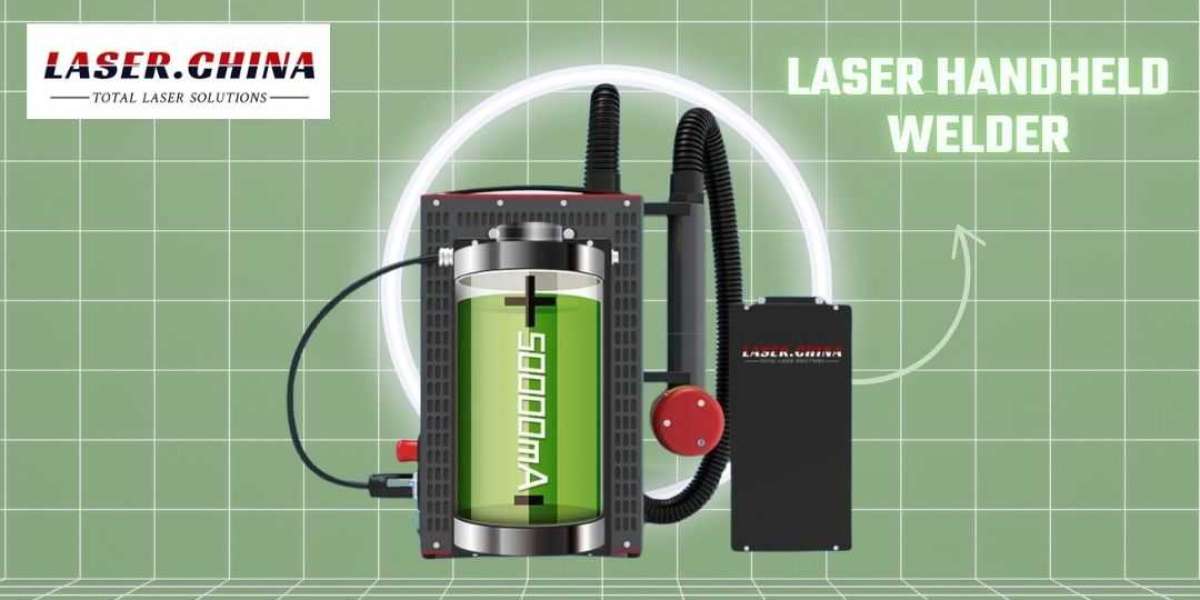Handheld laser welding is a relatively recent innovation that utilizes high-powered laser beams to join materials, typically metals, in a precise, efficient, and controlled manner. Unlike traditional welding methods, which rely on direct contact between a heated electrode and the material being welded, handheld laser welding uses a focused beam of light to melt and fuse the material together. This process offers numerous advantages, particularly in industries requiring precision and versatility.
How Handheld Laser Welding Works:
Handheld laser welding involves the use of a fiber optic laser that generates a focused, high-energy beam. The laser is directed onto the workpiece via a handheld device, which the operator controls to move along the weld line. The concentrated heat from the laser melts the metal at the point of contact, and as the beam moves away, the molten metal solidifies, creating a strong, durable bond. This method requires no direct contact with the material, minimizing heat distortion and maintaining the integrity of the surrounding material.
Key Benefits of Handheld Laser Welding:
Precision and High-Quality Welds: One of the most significant advantages of handheld laser welding is its precision. The laser can be focused to a very fine point, which allows the welder to make highly detailed and accurate welds, even in tight or complex spaces. This level of precision results in strong, clean, and aesthetically pleasing welds with minimal post-welding cleanup.
Reduced Heat-Affected Zone (HAZ): The heat-affected zone is the area surrounding the weld that is altered due to the heat from the welding process. With handheld laser welding, the heat-affected zone is significantly smaller compared to traditional methods like MIG or TIG welding. This reduces the risk of warping, discoloration, or structural weakening of the surrounding material, making it ideal for delicate or high-precision applications.
Speed and Efficiency: Laser welding is faster than conventional welding techniques. The high power and focused nature of the laser beam allow it to melt material quickly, reducing the overall welding time. Additionally, since the heat is concentrated on a small area, the operator can complete welds more efficiently, increasing overall productivity.
Minimal Material Distortion: Because the laser beam is highly focused and doesn’t rely on direct contact with the material, the risk of material distortion is significantly lower than with traditional welding methods. This is particularly beneficial for thin or heat-sensitive materials that may deform or warp under excessive heat.
Portability: Handheld laser welding devices are compact and lightweight, making them ideal for on-site work or repairs. Traditional welding equipment often requires a fixed setup and large power sources, while handheld laser welders are much more portable and versatile. The operator can easily maneuver the tool, allowing for precise welding in hard-to-reach locations or remote environments.
Minimal Post-Welding Treatment: The precision and controlled nature of handheld laser welding result in minimal spatter and clean welds. As a result, less post-welding finishing work is needed, reducing labor costs and improving the overall efficiency of the process. This is in contrast to traditional welding methods, which often produce significant spatter or require grinding and polishing to achieve a clean finish.
Wide Material Compatibility: Handheld laser welding is compatible with a variety of materials, including steel, stainless steel, aluminum, copper, and even precious metals like gold. This versatility makes it suitable for industries ranging from automotive and aerospace to electronics and jewelry.
Applications of Handheld Laser Welding:
Handheld laser welding has a wide range of applications across different industries:
Automotive Industry: Used for welding components such as car bodies, exhaust systems, and battery packs, especially in situations where precision and a clean, strong weld are required.
Aerospace Industry: Employed for high-precision welding of delicate components like turbine blades and fuel tanks, where structural integrity and minimal heat distortion are critical.
Electronics and Electrical Manufacturing: Utilized for welding small components in the electronics industry, such as connectors, circuit boards, and battery packs, where minimal heat distortion is essential.
Jewelry Making: Laser welding allows for precise and clean welds when working with precious metals, enabling jewelers to create intricate designs with minimal risk of damaging the material.
Shipbuilding and Heavy Machinery: Ideal for welding thicker metals in shipbuilding or heavy machinery manufacturing, where accuracy and minimal heat distortion are essential for ensuring the strength and longevity of the materials.
Comparison with Traditional Welding Methods:
Traditional welding methods, such as MIG, TIG, and Stick welding, have been used for decades, but they come with certain limitations compared to handheld laser welding. For instance, MIG and TIG welding are often slower and can produce larger heat-affected zones, leading to material distortion. Stick welding, while versatile, is typically less precise and generates more spatter, which requires additional cleanup. Handheld laser welding, on the other hand, is faster, more precise, and produces cleaner results with less heat distortion.
However, traditional welding methods may still be preferred in certain situations, especially when working with thick materials or when cost is a primary concern, as handheld laser welders can be expensive upfront. Despite this, the long-term benefits of handheld laser welding—such as improved efficiency, reduced post-weld finishing, and high-quality results—make it an increasingly popular choice in many industries.
Conclusion:
Handheld laser welding offers numerous advantages over traditional welding methods, including precision, speed, reduced heat-affected zones, and portability. Its applications span a variety of industries, from automotive to electronics, and it is particularly suited for situations where high-quality, clean, and strong welds are required. Although it may involve a higher initial investment, the benefits in terms of efficiency, productivity, and weld quality make handheld laser welding an increasingly valuable tool in modern manufacturing and repair.














